Jennifer Baham once made God a generous offer: “I’ll go anywhere in the world you want—except California or Florida.” But after attending an on-campus interview “just for practice,” she walked out sensing the Lord’s calling to . . . California. Jennifer has now taught at San Jose Christian School for 25 years and taken on increasing leadership over the years. She has taught all grades K–8 and splits her time between teaching and administration.
We asked Jennifer to start our series on seminar-style discussion, which she has used in 7th and 8th grades to great effect. When you think of a “seminar” class, you might picture graduate students gathering around to discuss readings or research. Yet, students far younger have been shown to benefit from this model of seminar discussion.
Seminar is marked by longer, intentional student discussion of a text. Students come in ready to grapple with the text’s “big ideas,” having already covered background information or other preparation. Seminar can then blend high engagement—as students do most of the talking—with high academic mastery, since it builds critical thinking, interpretation, and communication skills. The teacher often takes notes on each participant, noting thoughtful reflections, questions, references to the text, and active listening. These records are valuable for assessment and over time, show the group’s progress.
In part one of our article series on seminar-style discussion, Jennifer shared seven researched-backed practices with CSI Bible Specialist Heidi Dean that she uses to lay the foundation for middle school seminar.
1. Set Clear, Measurable Goals
The best discussions have 1–2 measurable goals that are communicated to students in advance, assessed, and built on over time. Now we naturally have a content goal in mind, such as grappling with the big idea of “Legalism” in the Gospel of Matthew. But add to that a communication goal: What is one communication technique your students should practice this time? Having a focused and rich dialogue does not come naturally; students need coaching and practice in the art of discussion. So, keep a list of interpersonal skills you’d like to see students display, and choose one of these as a goal in each discussion. (Alternately, allow students to choose from the list). Practicing one technique—and assessing progress through the teacher’s note-taking—produces a higher-quality outcome over time.
2. Circle Chairs to Promote Engagement
Our ultimate desire is to see students actively engaged with each other’s ideas, building on comments, or thoughtfully disagreeing and thereby improving their own thinking. But the first step in student interaction is simply to look at one another rather than the teacher. Rows of chairs that face the teacher work best for teacher-led instruction. For student-to-student interaction, rearrange chairs into a circle. Students can actively listen and respond better when they sit facing one another.
3. Teach Eye Contact First
Teach students that active listening means visibly paying attention to the speaker through body language and words. The first step of active listening is simply, “To look at the one person who is speaking.” Students who struggle with distraction or off-hand remarks will need to work harder to accomplish this goal. Others simply find it unfamiliar and uncomfortable. When practicing this technique, Jennifer even stops students and asks them to look each other in the eye when responding.
4. Practice Active Listening Phrases
Teach students what “active listening” is and give them sample phrases that reflect the skills of encouraging, re-stating, and clarifying each other’s comments. Jennifer made a poster of these for her classroom, taken from Productive Group Work by Frey, Fisher, and Everlove. When practicing active listening, she may ask students to use one of the scripted phrases. While it may feel awkward at first, Jennifer observed that students actually find it kind of fun. She has noticed that students are receptive and even hungry to learn how to dialogue because in the current culture of social media, students are not taught life-giving interaction.
5. Provide the Questions . . . Then Wait
Jennifer notes that while eighth graders are ready to think about harder issues, they need the opportunity to look something up or ponder it, rather than thinking on their feet. We can provide wait-time in the discussion itself by not filling silences too quickly. But we can provide even greater wait-time by giving out the questions in advance. Then students can record individual responses, discuss them as pairs, or take them home to interview an adult. Jennifer loves this last option, because notes from an adult conversation adds maturity to the student-discussion. All these techniques give students time to prepare, so that each participant will have something to share during discussion.
6. Invite Students to Share Someone Else’s Idea
A common issue in middle school is that students are self-conscious and concerned about what others may think. “Getting around that barrier is important to keep discussion going,” notes Jennifer. She finds that adolescents are braver with sharing someone else’s opinion, so having those small conversations from Step 5 are helpful. That way, you can ask students to share what someone in their group thought or wondered. This practice is also a way to love one another and practice active listening by incorporating each other into the conversation.
7. Encourage Quiet Students to Participate
For some students, speaking up is a challenge. Let students know that you’d like to hear from everyone at least once, and many times, when students see you keeping notes and planning to follow up, they are already more prone to speak. Quiet students are also more prone to contribute when they are given time to jot down written notes (see Step 5). Try to involve students who have not yet spoken, and if they aren’t ready to share, follow up once more later on. Jennifer notes that quiet students are often the most reflective and insightful, so the group needs their voices.
Expect to Be Surprised!
As teachers, our heart’s desire is to see students engage deeply with Scripture. Teachers who practice seminar appreciate that it holds students accountable to discuss and interpret God’s Word in a mature manner. In fact, adults are often surprised by the depth of conversation middle school students are capable of when they have regularly practiced this model.
Written by Heidi Dean
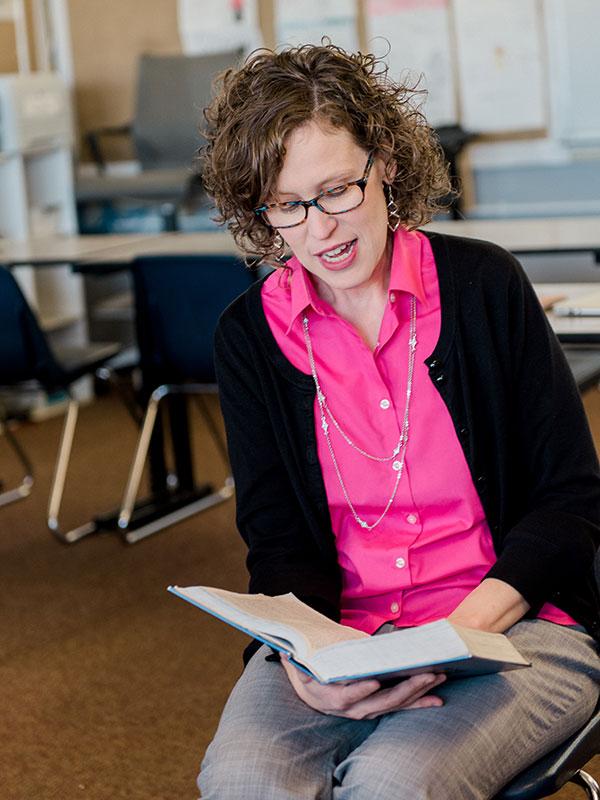
Teaching seventh and eighth grades is Jennifer Baham’s passion.
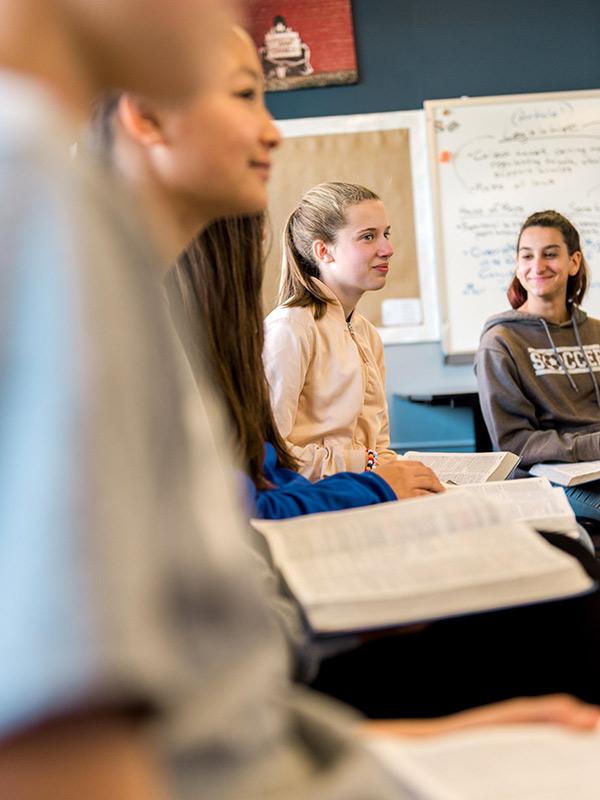
Encouraging students to share someone else’s idea is another practice of active listening.
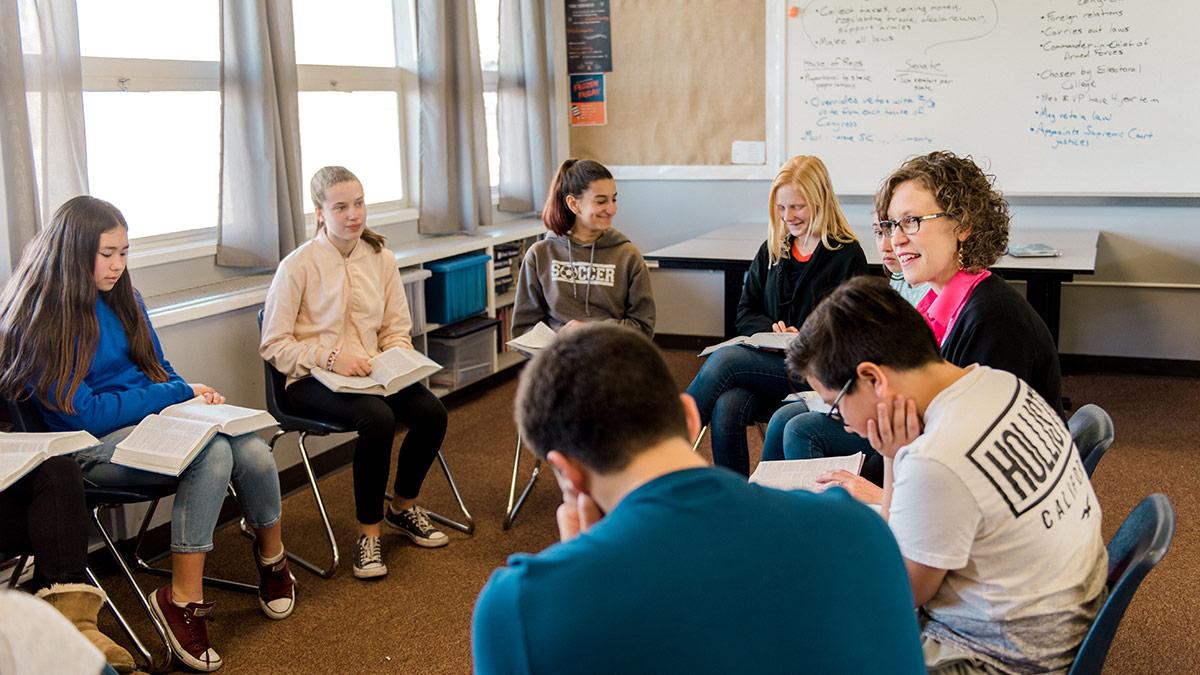
Creating a circular format promotes eye contact, active listening, and engagement during discussion.
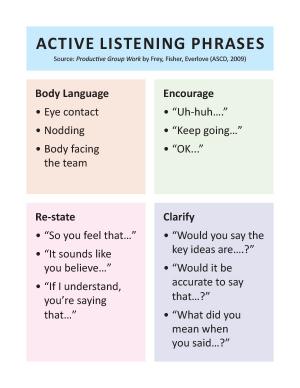
Active Listening Phrases sheet
A guide to positive active listening body language and phrases.
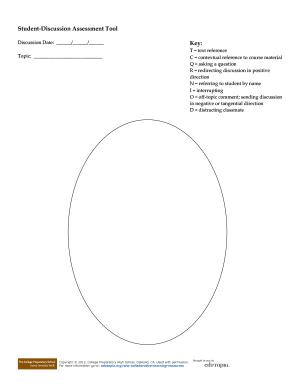
Discussion Assessment Tool – blank worksheet
Blank worksheet to assess classroom circle discussions.
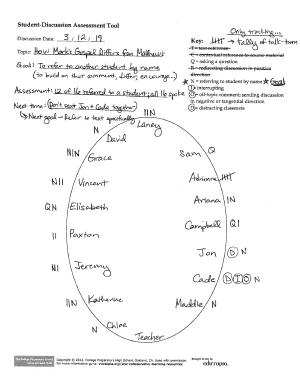
Discussion Assessment Tool – sample worksheet
Sample worksheet showing a filled-out discussion assessment tool.